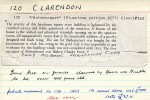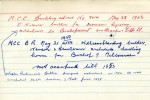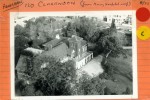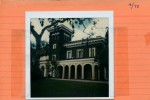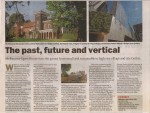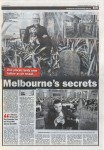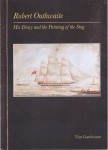Bishopscourt
East Melbourne, Bishopscourt, A History
A history of Bishopscourt, with emphasis on the garden. Plans, photos.
- 5280 reads
East Melbourne, Bishopscourt, Open garden days 2002, 2003, 2006
Newspaper clippings and pamphlets about open garden day and other visits at Bishopscourt on 12 October 2002, 29-30 Nov. 2003 and 26 April 2006. Photos.
- 5949 reads
East Melbourne, Clarendon Street 120 - Burchett
Bluestone part built in 1853 by William Standing as residence for the Bishop of Melbourne - Architects - Newson and Blackburn. Brick additions 1903.
Classified by the National Trust of Victoria - see index card for citation
- 3149 reads
History in newspapers
A file of newspaper cuttings from the late 1990s relating to Melbourne’s early history. Some relate to East Melbourne.
117 George Street – a report of the sale of Coniston, 117 George Street, East Melbourne. Mentions previous owner Mabel Goodyear. (1996)
- 1122 reads
Open House at Bishopscourt
Newspaper clippings about Melbourne's Open House scheme for 2011. Bishopscourt was part of the program.
- 2995 reads
Power House or White Elephant
A review of the book, Bishopscourt Melbourne - Official Residence and Family Home by Elizabeth Rushen (Mosaic Press 2013). The author of the review is David Woods, the son of Sir Frank Woods KBE, Archbishop of Melbourne 1957-77. Published in The Melbourne Anglican, February 2014, page 25.
- 3304 reads
Richmond and East Melbourne Sketchbook
Drawings of some landmark buildings in Richmond and East Melbourne with accompanying text giving historical information
- 5200 reads
Robert Outhwaite: His Diary and the Painting of the Stag
Robert Outhwaite was a passenger on the Stag, the same ship which in 1847 brought to Melbourne its first bishop, Charles Perry, and his wife, Frances. Frances Perry wrote about the voyage in her journals, in his diary Outhwaite gives another view.
- 1647 reads
The Two Wings of Bishopscourt: the reasons for their contrasting styles and the origin of their designs
Article about the two very different wings of the Bishopscourt building. It discusses the sources of the two styles and shows their importance within the architectural movements each represents.
- 3081 reads

